Benjamin Moore’s Classic Gray (OC-23) and Edgecomb Gray (HC-173) are two of the most popular gray paint colors for home interiors. With both offering beautiful, versatile neutral backdrops, many homeowners try to decide between these shades of gray.
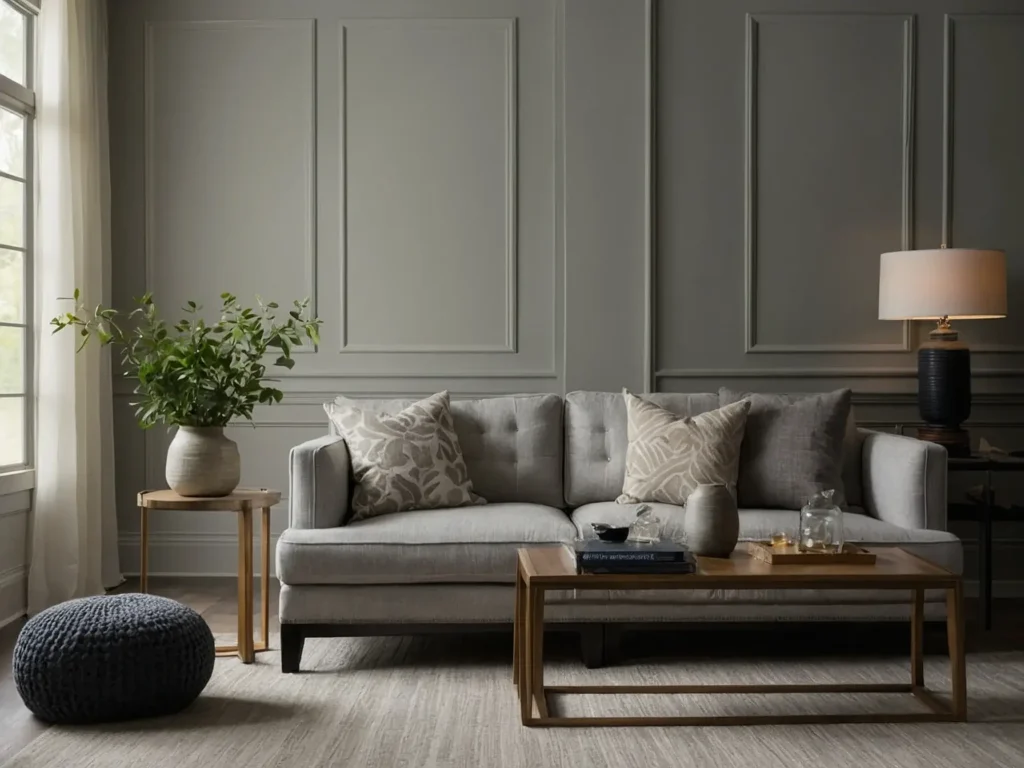
This article will dive into the undertones, light reflectance values, ideal room applications, and complementary colors for Classic Gray and Edgecomb Gray. We’ll also look at frequently asked questions to help you choose the right shade of gray for your space. By the end, you’ll clearly understand the main differences between these two gorgeous grays.
Benjamin Moore’s Classic Gray
With a Light Reflectance Value (LRV) of 74, Classic Gray by Benjamin Moore delivers a beautiful, airy neutral backdrop. It falls within the light to light-medium realm of grays, coming across as a gorgeous soft gray that flatters most rooms.
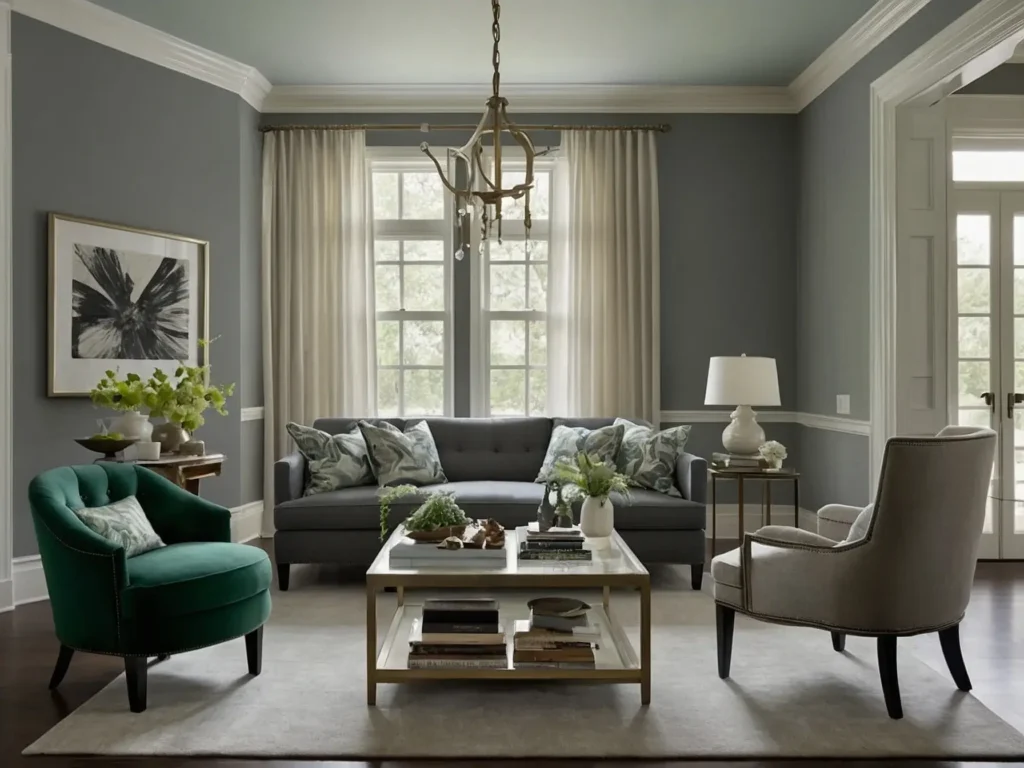
The green-gray undertone of Classic Gray OC-23 adds freshness and a hint of sophistication. Unlike cool grays that can read harshly under certain lighting, Classic Gray has a warmth that keeps it universally flattering. The green undertone also complements a wide range of colors from warm neutrals to blues and greens.
Classic Gray creates a soothing, relaxed feel with its soft green-gray hue. The high LRV makes it reflect light beautifully, opening up smaller spaces. It works wonderfully as a whole home neutral, looking gorgeous in spaces like living rooms, bedrooms, and offices.
With a versatility spanning traditional to modern spaces, it’s no surprise Classic Gray remains one of Benjamin Moore’s top choices for gray paint.
Benjamin Moore’s Edgecomb Gray
Sitting at a darker LRV of 63, Edgecomb Gray HC-173 warms up spaces with its greige undertone. With a base of gray softened by beige, it delivers a cozy, elegant neutral backdrop for interior walls.

Edgecomb Gray can adapt well to many lighting conditions thanks to its greige undertone. In cooler north facing rooms, its warm beige notes come forward to heat up the space. And in warmer southern exposures, the gray base keeps Edgecomb Gray looking crisp rather than drab.
With airy whites and beiges dominating many new builds, Edgecomb Gray makes for an elegant alternative. The cozier, warmer neutral works well in most living spaces but feels particularly cozy in bedrooms. Edgecomb Gray also pairs beautifully with woods, leathers, and other organic textures.
For those seeking a warmer alternative to light airy grays, Edgecomb Gray brings sophistication and versatility to interior palettes. The greige paint color works well throughout the home.
Comparing the Undertones and Effects of Classic Gray vs. Edgecomb Gray
The undertones make for one of the biggest differences when choosing between Classic Gray and Edgecomb Gray. Classic Gray leans cooler with evident green-gray notes, while Edgecomb Gray reads warmer and more beige.
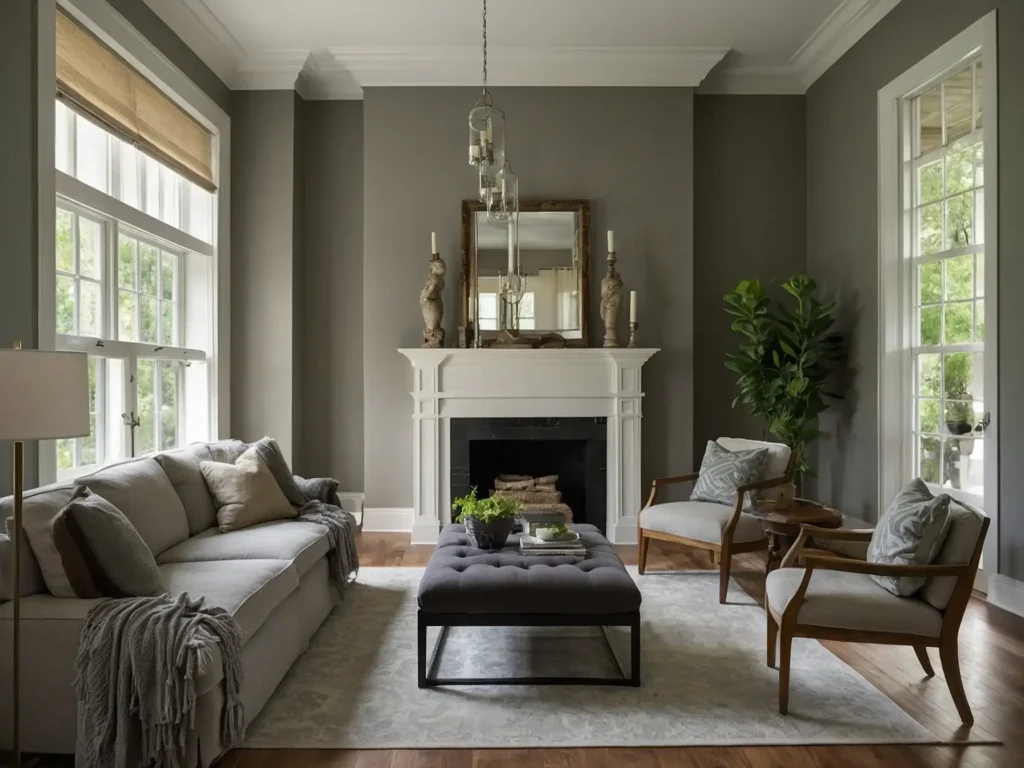
These undertones impact the overall feel and mood created by the gray paints. Classic Gray’s green-gray base feels more relaxing and airy. The cooler tones allow plenty of light reflection, opening up the space. Edgecomb Gray’s greige base creates a warmer, cozier effect. The beige softens edges and makes the color more flexible across lighting.
Beyond mood, the undertones affect how each color pairs with other hues. Classic Gray beautifully coordinates with whites, beiges, blues, and greens. The green-gray base allows it to sit next to colors on both the warm and cool side of the color wheel. Edgecomb Gray pairs best with warmer neutrals and earth tones. The greige base is a wonderful backdrop for woods, leathers, terracotta, and brass accents.
When choosing furniture and decor pieces, it helps to keep these undertone differences in mind. The two grays can be coordinated with similar colors but may play best with slightly different palettes tailored to their unique base undertones.
Ideal Rooms and Usage Cases for Classic Gray vs. Edgecomb Gray
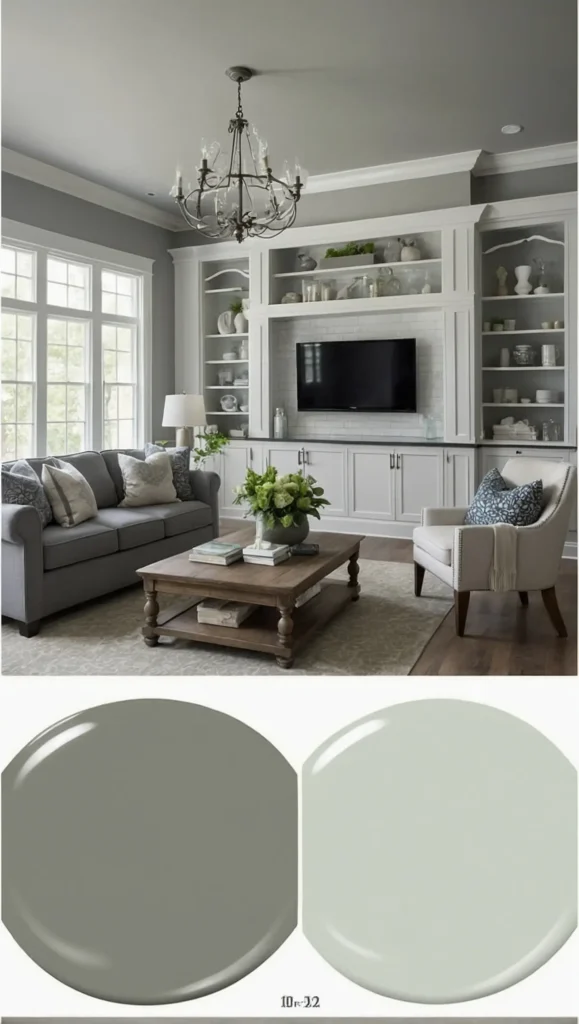
With their distinct personalities, Classic Gray and Edgecomb Gray each shine in different settings. Here’s a look at where these two Benjamin Moore grays fit best.
Spaces Where Classic Gray OC-23 Excels
- Airy living spaces: The light green-gray base of Classic Gray keeps living rooms, family rooms, and open concept spaces feeling fresh and relaxing.
- Bright, modern bedrooms: Classic Gray makes an amazing backdrop in contemporary bedrooms where you want a soft, inviting gray that reflects light beautifully.
- Bathrooms: With its soothing green undertones and high LRV, Classic Gray works wonderfully in bathrooms where you want an airy spa-like feel.
- Offices: Classic Gray promotes focus and clarity in home offices, allowing you to concentrate with its laidback vibe.
- Kitchens: The ever-versatile Classic Gray brings a relaxed elegance to kitchen spaces as a key neutral on walls or cabinetry.
Applications Where Edgecomb Gray HC-173 Shines
- Cozy bedrooms: The greige base and lower LRV of Edgecomb Gray create a warm, welcoming backdrop in bedrooms.
- Living rooms: Edgecomb Gray brings a refined elegance to living spaces, balancing grayscale with warmer beige tones.
- Entryways: The greige undertones of Edgecomb Gray make it an ideal welcoming color for entry spaces.
- Dining rooms: Edgecomb Gray sets a sophisticated stage in formal dining rooms, pairing well with moody lighting.
- Libraries or studies: The cozy feel of Edgecomb appeals in spaces like home libraries or studies where you want a refined yet warm backdrop.
By weighing your goals for the space, you can choose the gray that aligns best. Classic Gray promotes airiness, while Edgecomb Gray delivers coziness.
Ideal Trim and Accent Colors for Pairing with Classic Gray and Edgecomb Gray
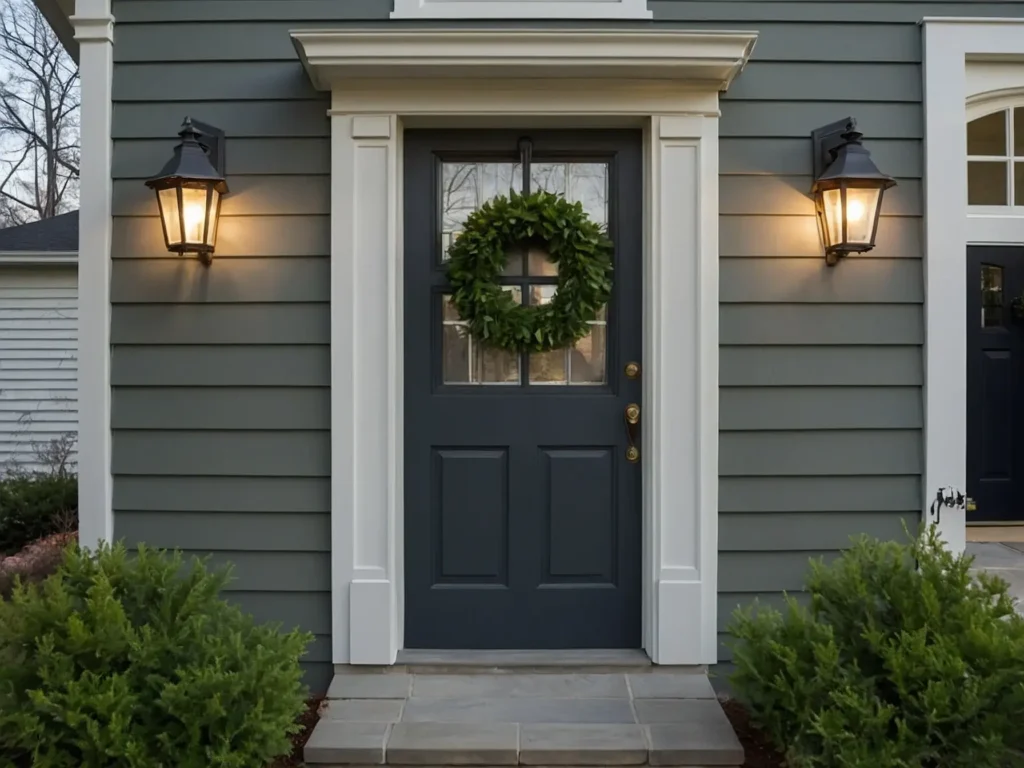
The right trim and accent colors can let gray paint colors like Classic Gray and Edgecomb Gray reach their full potential. Here are some recommended pairings.
Trim Colors That Complement Classic Gray
- White trim: For traditional appeal, bright white trim frames Classic Gray beautifully.
- Gray shades like Edgecomb Gray: Try a darker gray like Edgecomb Gray on trims for a more moody, sophisticated look.
- Crisp navy blue: Navy trim pops against Classic Gray walls, feeling both classic and modern.
- Soft sage green: Bring out the green undertones of Classic Gray with tranquil sage green trims.
- Light oak or maple wood tones: Classic Gray sets off light natural wood trims like oak and maple.
Trim Colors That Flatter Edgecomb Gray
- Pure white: Classic bright white trim refreshes Edgecomb Gray walls with a clean contrast.
- Warm woods like walnut: Richer wood trims like walnut or mahogany make a stylish pairing.
- Charcoal gray: Like Benjamin Moore’s Black Panther, a dark gray reads sophisticated against Edgecomb Gray walls.
- Deep green for a bold accent: Jewel-tones like emerald green pop dramatically against the greige backdrop.
- Warm metallics like aged bronze or copper: Metallic trims give Edgecomb Gray a glam yet cozy look.
Beyond trim, colors like navy blues, greens, copper, brass, and terra cotta work well with Classic Gray. Warm taupes, browns, golds, and ivory suit Edgecomb’s greige base.
Similar Gray Paint Colors to Consider

While Classic Gray and Edgecomb Gray have their own distinct personalities, you can find similar gray paint colors to suit your needs. Here are a few options if you’re still unsure between the two.
Colors Like Classic Gray OC-23
- Balboa Mist by Benjamin Moore: Just a touch darker than Classic Gray while retaining the green gray undertone.
- Gray Owl by Benjamin Moore: Another light green-gray that reads similarly to Classic Gray with a bit more depth.
- Sea Salt by Sherwin Williams: A light green-leaning gray that works well if you’re seeking a cooler, relaxing backdrop.
Colors Similar to Edgecomb Gray HC-173
- Revere Pewter by Benjamin Moore: The most popular greige with a slightly darker and warmer base than Edgecomb Gray.
- Agreeable Gray by Sherwin Williams: A softer greige with a touch more gray than Edgecomb Gray.
- Accessible Beige by Benjamin Moore: A greige with more beige in its base if you want something lighter and warmer than Edgecomb.
Testing swatches in your space can help zero in on the perfect gray that captures the tone you love from Classic Gray or Edgecomb Gray.
Frequently Asked Questions
For those still weighing Classic Gray and Edgecomb Gray, here are some commonly asked questions to inform your decision.
What is the closest Benjamin Moore color to Edgecomb Gray?
The closest colors to Edgecomb Gray are Revere Pewter and Kendall Charcoal, with Revere Pewter skewing a bit darker and greener and Kendall Charcoal reading slightly lighter and warmer. Both make beautiful alternatives.
Does Classic Gray have a green undertone?
Yes, Classic Gray has subtle green undertones. It reads as a cool green-gray that sets it apart from many grays with blue, purple, or taupe undertones. The green base gives it a relaxing, airy feel.
How dark is Edgecomb Gray compared to Classic Gray?
Edgecomb Gray is significantly darker than Classic Gray. Edgecomb Gray has an LRV of 63 compared to Classic Gray’s LRV of 74. The lower LRV makes Edgecomb appear darker for a more moody, cozy effect.
Which gray paint is more versatile?
It depends on the look you want, but Classic Gray may be a bit more versatile overall. Its lightness and green-gray base make it extremely flexible across room types from airy kitchens to restful bedrooms. Edgecomb Gray’s darker greige tone suits cozier spaces like bedrooms and libraries.
Can Cool or Warm Undertones in Grays Look Green?
Grays with strong cool undertones can take on a subtle green hue. Classic Gray is a great example of a green-tinted gray. Warm grays may also pick up very faint olive green tones in certain lighting. It comes down to the base pigments in the gray paint.
How do Classic Gray and Edgecomb Gray compare in terms of durability?
As Benjamin Moore paints in the same sheen, Classic Gray and Edgecomb Gray offer similar durability and washability. Both handle wear beautifully in matte and eggshell sheens. Consider a pearl or satin sheen for added longevity for high traffic areas.
Which brand of gray is most popular?
Benjamin Moore grays like Revere Pewter, Stonington Gray, and Classic Gray rank among the most popular. Sherwin-Williams grays like Agreeable Gray and Repose Gray also see high demand. Grays tend to dominate the neutral paint scene.
Conclusion
Regarding beautiful Benjamin Moore grays, you can see why Classic Gray and Edgecomb Gray are both go-to choices for their versatility and aesthetic appeal.
Keep the undertones, light reflectance values, and overall moods of these colors in mind. Classic Gray creates an airy backdrop with its light green-gray base – perfect for refreshed open spaces. For cozier elegance, Edgecomb Gray’s greige warmth excels in bedrooms, studies, and more intimate rooms.
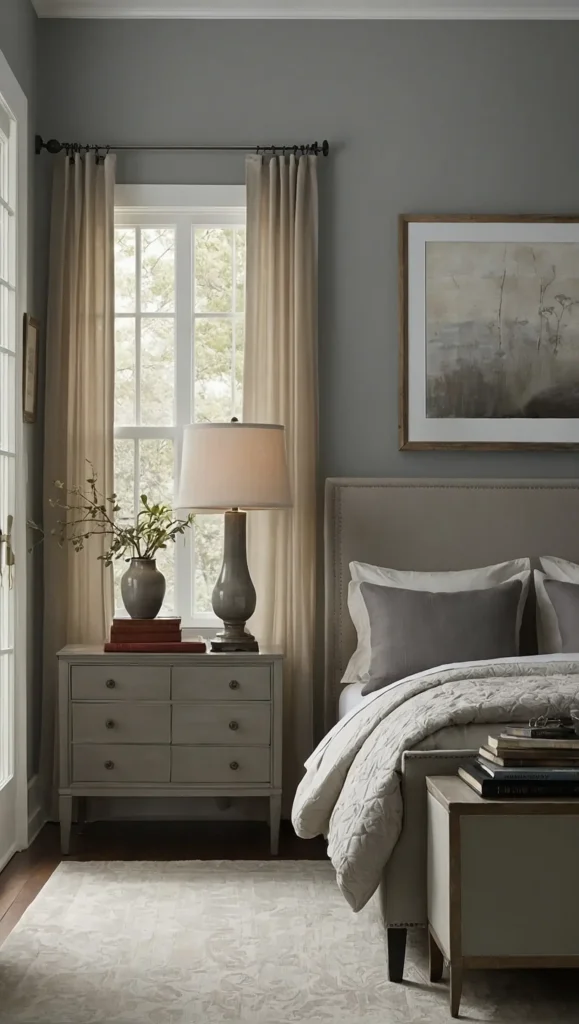
Consider the colors in the room and the ambiance you hope to achieve. Your goals and the comparisons above will guide you to the perfect gray between Classic Gray and Edgecomb Gray for your home.
Whichever Benjamin Moore gray you choose, you can feel confident in a gorgeous, on-trend neutral shade that makes spaces feel fresh and refined. Let these calming grays form the backbone of a harmonious, relaxing home palette.
